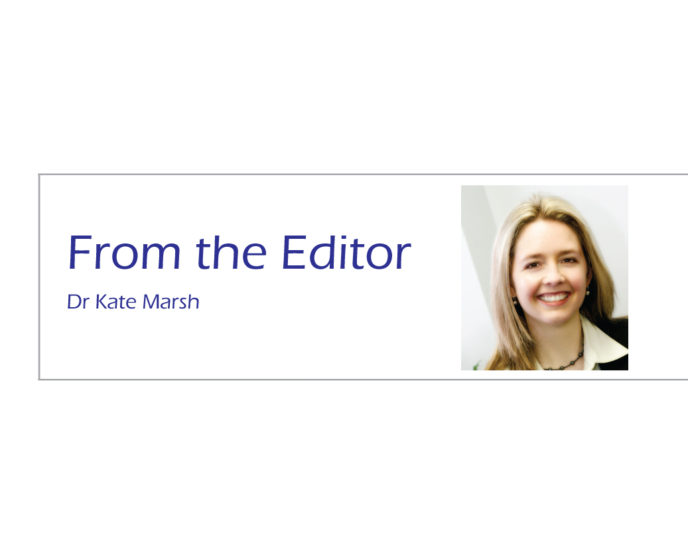From the Editor

Introduction
Life has certainly changed since the last edition of the ADE was published, particularly when it comes to our work as diabetes educators. It will be interesting to see if some of these changes evolve into a new way of working, even as restrictions start to be relaxed.
Understanding the current interest in telehealth, with many of us now providing diabetes education remotely, we are fortunate to have two ADEA members share their knowledge and experience on this topic. Dietitian CDE Robbie Tyson discusses what to look for when choosing a telehealth platform while Amy Rush, Dietitian CDE from the Type 1 Diabetes Family Centre discusses her approach to delivering diabetes care via telehealth, and what she has learned from the experience. Both articles provide practical information and tips.
As discussed in my March editor’s column, we’ve made the decision to move away from themed editions of the ADE in 2020 to ensure we are covering the broad range of topics you are interested in. Our June edition features articles on several topics you told us you wanted covered.
Trisha Dunning, Chair of Nursing at Deakin University discusses the important topic of planning for end of life care with older people with diabetes. Essential reading for all diabetes health professionals working with older individuals.
Dr Hayley Tyson, Sexual Health Physician, helps us improve our skills in talking about sexual health with people with diabetes, with practical tips on how to start the discussion.
Shannon Lin from the University of Sydney, shares the results of her study evaluating multilingual Australian resources to determine whether they are easy to understand and act on. The findings provide some helpful tips for those developing and evaluating consumer education materials.
With an increasing number of people now using continuous glucose monitoring (CGM), particularly following the recent widening of the NDSS subsidy, understanding and interpreting CGM data is becoming an increasingly important part of our work as diabetes educators. CDE Carolyn Judge helps us to understand the standardised CGM metrics and AGP report and how to use these in practice to individualise diabetes care.
ADEA, with funding from the NDSS, has recently developed resources for diabetes health professionals to help them in improving their communication with people with an intellectual disability disorder (IDD). Dr Roy Rasalam, member of the project Expert Reference Group, provides a brief overview of the resources (a written guideline and online training module) which are now freely available to diabetes health professionals through the NDSS website.
We also have an update from the NDSS on information and support resources for women with gestational diabetes, discussing the range of resources available to these women.
Finally, a reminder that you can read the ADE via https://ade.adea.com.au on any digital device and can also print, share and comment on articles as well as being able to browse or search for past articles. If you prefer to read offline, you can print any articles you would like to read, either in hard copy or as a PDF which you can then save and read later. You can find instructions on how to do this here https://www.youtube.com/watch?v=Df9-L_7QvqE
Acknowledgements
I once again would like to thank our hard-working EAG, and our authors, for helping to bring this edition together. We hope you enjoy reading it and welcome your feedback.